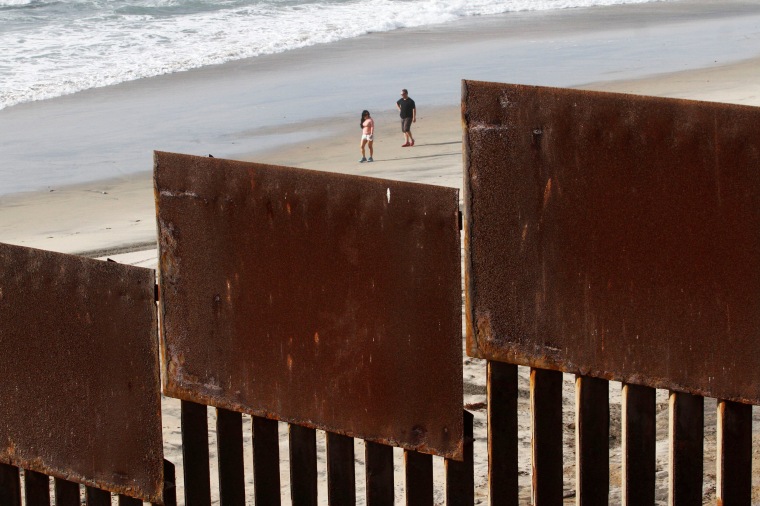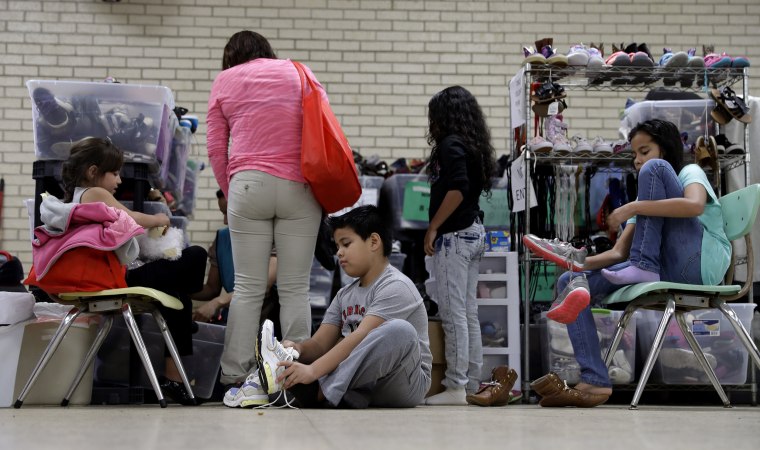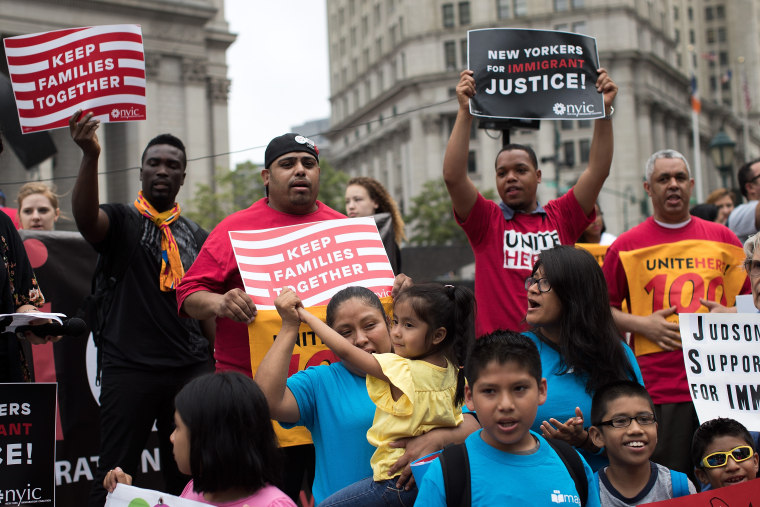Days into his tenure as president-elect, Donald Trump has softened his tone on a signature domestic policy agenda that helped him to victory: a hardline stance on immigration.
Bending to the realities of limited resources, backlogged courts and the sheer scope of an unwieldy immigration system, Trump now says that he will focus immediate deportation efforts on just a fraction of the 11 million undocumented immigrants currently living in the United States.
But no matter how much he eases back on his campaign promises, policy experts agree: Trump will likely have a profound impact in pursuing one of the most aggressive enforcement actions on immigration seen in modern American history.
Here are some of the roadblocks he faces if he moves ahead with his sweeping agenda:
1. As many as 3 million undocumented immigrants are up for swift deportation — maybe.
Candidate Trump sounded very different on immigration than President-elect Trump.
Just look at how he abandoned his most sweeping promises to deport the entire undocumented population within two years, now saying that 3 million people — mostly convicted felons — would be the priorities in forced removals from the U.S.
“What we are going to do is get the people that are criminal and have criminal records, gang members, drug dealers,” Trump told CBS' "60 Minutes" on Sunday. “We have a lot of these people, probably two million, it could be even three million, we are getting them out of our country or we are going to incarcerate.”
Still, Trump’s deportation numbers do not fully add up.
It is likely that Trump is citing figures from a 2012 Department of Homeland Security memo that estimated 1.9 million undocumented immigrants had criminal records and should be deported.
But there’s a catch. The Migration Policy Institute, a nonprofit think tank, found that nearly half of those 1.9 million were legally present in the United States as green card holders, and were not undocumented.
Related: Trump Transition Team Filled with Hardline Anti-Immigration Advocates
MPI estimates that a more accurate figure of undocumented immigrants with criminal records would be closer to 820,000.
This raises fears among pro-immigrant advocates that a Trump administration would not stop with deporting only criminals, especially if the numbers fall far short of expectations.
“If they’re going to set an arbitrary number, they’re going to waste valuable law enforcement resources and detain and deport fathers, mothers and children who are stuck in a broken immigration system,” said Ali Noorani, executive director of the National Immigration Forum.
2. The federal government is not equipped to process an unprecedented rate of deportations.
President Barack Obama has already set the bar on most deportations carried out under a single administration. To date, he has signed off on deporting more than 2.5 million people over the course of his two terms.
But if Trump were to exceed historic levels of deportations, and at an accelerated rate, he would almost inevitably run into a number of logistical problems.

“President Trump would be confronted by two very important impediments — resources and the constitution,” said Muzaffar Chishti, director the Migration Policy Institute.
Stephen Legomsky, a professor at the Washington University School of Law and the former chief counsel of U.S. Citizenship and Immigration Services, said the executive branch has broad authority to deploy limited immigration forces as it sees fit.
But rounding up, detaining and deporting millions of immigrants, while respecting their constitutional rights and due process, takes time and money.
“If Congress were to appropriate more funds for enforcement, then he could go after garden-variety undocumented immigrants,” Legomsky said. “It’s very hard to predict how much money Congress will want to appropriate for that purpose.”
3. Trump wants a ‘deportation force,’ although the House Speaker says that’s not happening.
House Speaker Paul Ryan is already throwing cold water on Trump’s pledge to build a “deportation force” that would increase the number of Immigration and Customs Enforcement agents by three-fold.
"We are not planning on erecting a deportation force. Donald Trump's not planning on that," Ryan told CNN on Sunday.
Ryan comes from a wing of the Republican Party that largely favors tackling immigration reform. In the past, he has indicated he prefers passing a variety of small immigration bills rather than one big comprehensive piece of legislation. At the top of the list of priorities are measures to strengthen resources at the border before addressing the 11 million undocumented immigrants.
And even if Congress did agree to bankroll a new Trump deportation force, staffing up and training new agents could take months.
Related: Obama Races to Protect His Achievements From Trump
ICE notoriously has one of the highest employment turnover rates in the federal government. It’s umbrella agency, the Department of Homeland Security, consistently ranks last in employment satisfaction rankings.
Border Patrol jobs tend to be difficult to fill during times of economic prosperity, Chishti said, particularly in recruiting women or Spanish speakers.
4. A backlogged court system means deportations are taking a very long time.
The deportation process is exceedingly complicated because there are two main legal tracks.

Border Patrol agents have broad powers to turn undocumented immigrants around at the border and out of America. They also have expedited court proceedings at the border that makes deportations move faster than on average.
But the 11 million undocumented people living in the U.S. interior are granted full legal proceedings to try and appeal federal orders of deportation.
“People are entitled to due process in their removal proceedings,” said Omar Jadwat, a staff attorney with the ACLU’s Immigrant Rights Project. “You can’t just scoop people up, put them on a plane and have them be gone.”
Every year this process takes longer to complete because the immigration court system is continually shattering records for how many cases remain unresolved.
The average immigration case takes more than two and a half years to complete, according to the Syracuse University-based Transactional Records Access Clearinghouse. There are currently 521,676 cases currently pending in the immigration court system — even after the Obama administration scrambled to hire more judges to adjudicate hearings.
This means that, while a “deportation force” could round up millions of immigrants at once, their cases would likely languish for years while they are processed in the courts. And if Trump were to order all immigrants detained while the courts move through their cases, it would quickly add up incarceration time on the taxpayers' dime.

